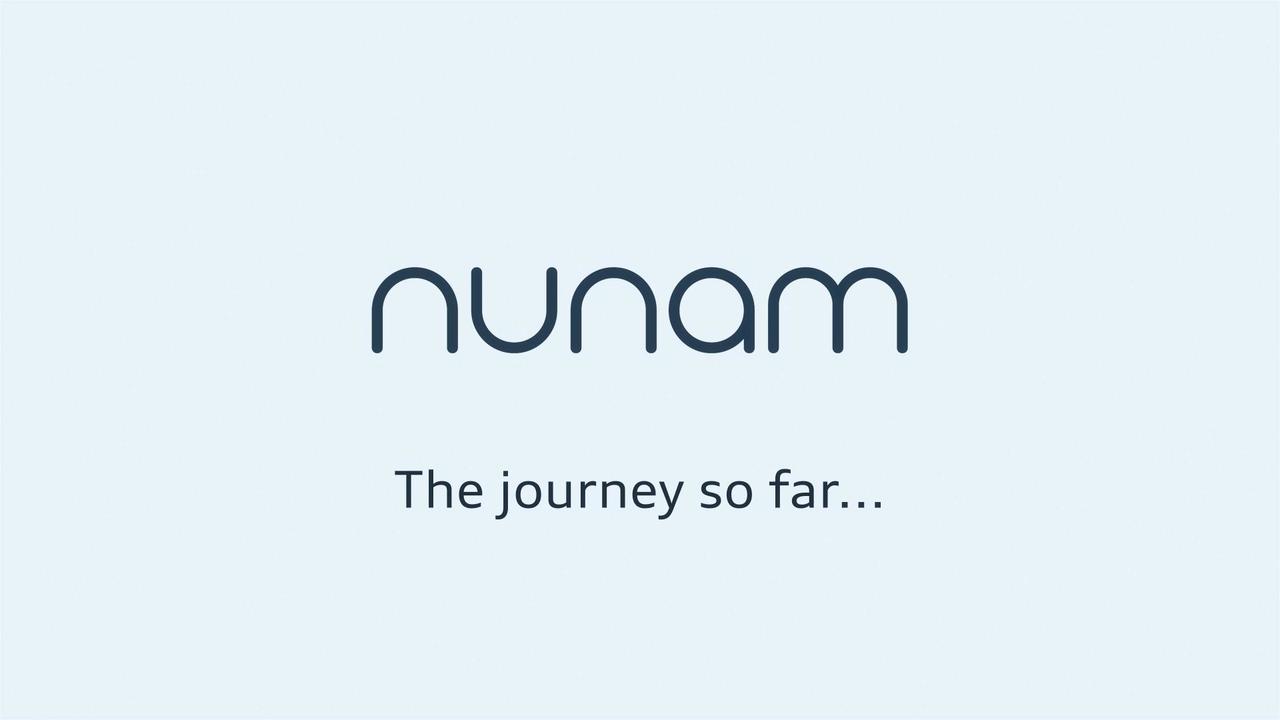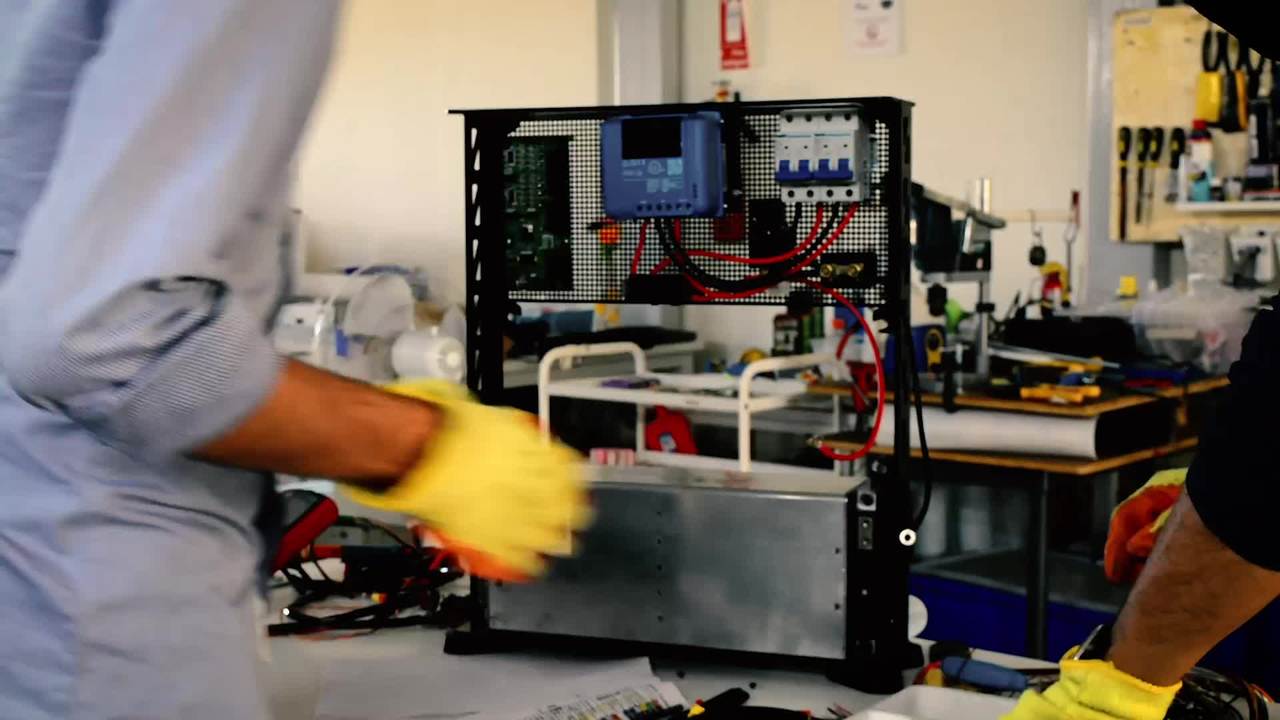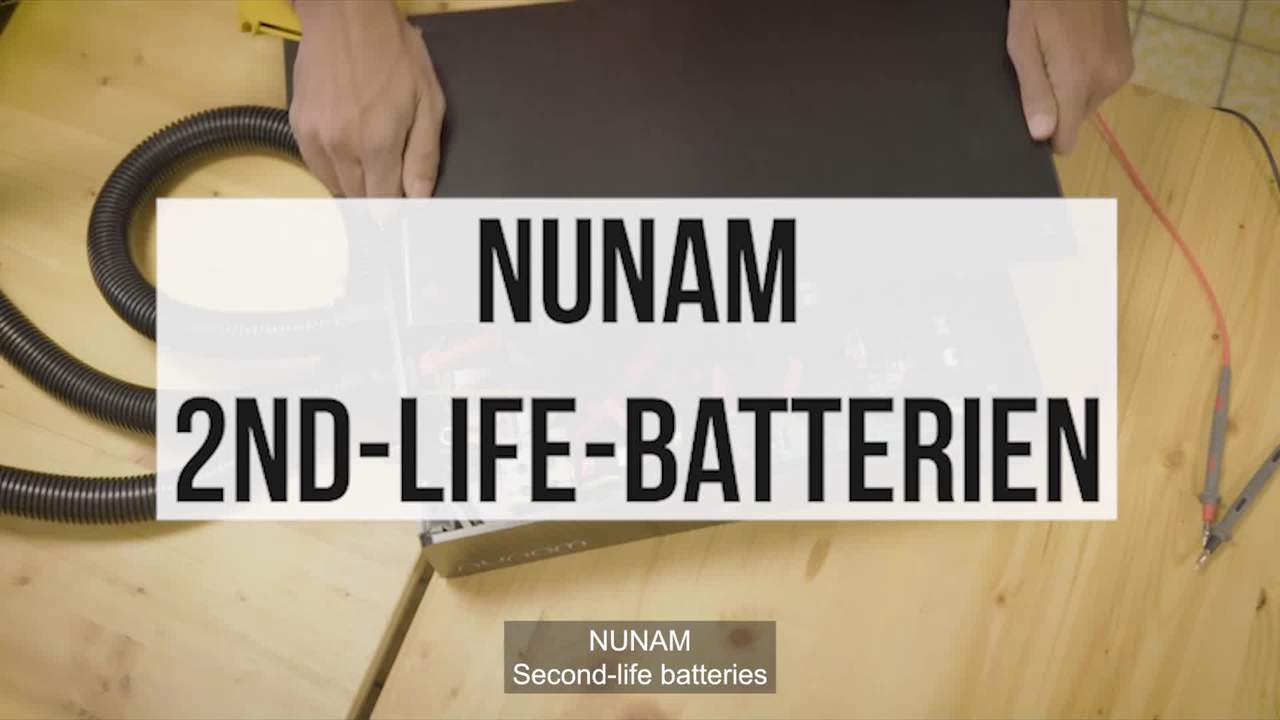Second-life battery: Green power from used batteries

The Nunam vision – second-life energy storage systems for the future
Nunam, a non-profit start-up company, obtains large quantities of old lithium-ion batteries from sources including discarded laptop batteries from electronic scrap dealers. The dealers obtain these used batteries from private households, public institutions, and companies.
Nunam takes the used batteries and creates a new energy storage system: the Nunam mobile “power bank”. It can supply power to small consumers such as smartphones, fans, or lamps. For example, a five-year-old laptop can serve as a light source for Indian fruit and vegetable sellers on a market and provide people in rural India with green electricity.
Innovative energy storage: used batteries with a residual capacity of roughly 65 %
These energy storage boxes benefit from a great deal of residual power. Initial experiences from the project have shown that the used batteries often still have a residual capacity of roughly 65 %. Using Nunam energy storage systems can counteract the waste created by electronics that are simply thrown away day by day in a targeted way.
The idea of these “second-life energy storage systems” is multi-layered: It is a concept that satisfies the various “rules” (Rs) for sustainable life and a future worth living.
The environmental project directly addresses all four ‘’R’’s – reduce, reuse, recycle and rethink – in addition to the topic of enabling.
Environmental project for future – green power from innovative energy storage
The long-term goal of the Nunam team is to offer the Nunam energy storage system for half the price of conventional energy storage systems.
To this end, the technology that regulates the use and interconnection of the old batteries in the background is optimized continuously. The Nunam energy storage systems are equipped with all sorts of technology features across hardware and software, including a SIM card that connects them to the internet.
This allows reading out data in real time, including the power capacity and geographical position of the mobile power banks.
This aspect is of fundamental importance in order to be able to get a transparent overview of the second-life system and gain insights for the further development of power supply.
The documentation and location via the app ensures that the second-life batteries that are completely depleted can be returned to Nunam. They can then be directed to functioning and effective recycling loops, thereby saving additional resources. (“RECYLCE”)
Second-life battery research – positive influence on the environment and society
What’s special about this environmental project is the social aspect. The low-cost provision of energy storage systems for solar energy in developing countries such as India provides the people who live there with easy access to clean electricity (green power). Millions of people in India live without reliable access to electricity and can benefit from solutions like this. (“RETHINK & ENABLE”)
At the end of the project, the results, data, and findings from the second-life battery research will be made available to anyone interested in an open source portal. This will ensure that the greatest possible number of interested persons can benefit from these findings about sustainable energy storage and mobile power banks, and put them to further use.
2nd-life energy storage: Nano-Grids with modules from pre-production vehicles
2nd-life energy storage: Nano-Grids with modules from pre-production vehicles

The first nunam power storage systems based on used laptop batteries are proving their worth in everyday use. India is subject to frequent power failures, so there is a great demand for new uses and applications to be developed for 2nd life storage batteries satisfying higher performance requirements. For this purpose, a new pilot project was developed using electricity storage from battery modules of a pre-production vehicle.
One widespread and suitable application for these are so-called nanogrids, which in developing countries are usually operated with lead-acid batteries. They supply current for a whole road with up to 50 shops, restaurants and grocers. However, not only do lead-acid batteries have a negative impact on the environment; they are also unfavorable in terms of handling. For example, they are less stable in their performance (discharge current and energy density), require intense maintenance and have a high transport weight combined with a short service life.
And so the idea was born as another milestone to manufacture an environmentally friendly 2nd life solar nanogrid on the basis of used e-tron battery modules and to test it in everyday use. In addition to the deployment of the storage systems in India, one of these nano grids was presented at the Landesgartenschau Ingolstadt 2021.

This is characterized by the following performance parameters and advantages: 24V direct current and 5 kWh system capacity. The service life is 10-15 years with a moderate rate of use and the charge and discharge state of the batteries is IoT connected. This allows it to be tracked using a SIM card and app. The new “2nd life storage battery” based on two used e-tron battery modules can thus replace four old lead-acid batteries in a nanogrid.
The first prototype of the “Nunam Solar Nanogrid” is currently being tested by an “energy entrepreneur” in Uttar Pradesh. For a small fee of 4 rupees per day (0.06 euros), small traders can purchase the new, sustainable power from a local energy supplier.
The new Nunam Solar Nanogrid allows up to 50 merchants to ply their trade, even at night. With immediate effect it is supplying a whole street with green electricity every evening, fully independent of the grid. This is generated during the day from solar energy and stored for later use.

Social Impact
Nunam second-life batteries – avoid waste, conserve resources, reduce CO₂
Aside from reducing waste (“REUSE”) and replacing the purchase of new energy storage systems with the secondary use (second life) of old ones, the project also pursues the following sustainable goals:
This new technical solution reduces CO₂ emissions (“REDUCE”). The system is CO₂-friendly, as the production and disposal of conventional lead-acid batteries as well as new lithium-ion batteries create carbon dioxide and additional electronic scrap. The second-life batteries used here have already been produced, and their use is continued for as long as possible as part of their “second life’’. That means that fewer new batteries have to be produced. This goes along with fewer mining activities for e.g. lithium or cobalt.
There is a further positive aspect: Many regions in India experience power outages every day and, depending on the situation, compensate this with kerosene lamps, lead-acid batteries, and diesel generators (for larger users). Some have no backup power supply system for power outages at all due to economic reasons.
In many cases, the use of affordable battery storage systems that are charged with environmentally friendly solar power can offer a better solution as compared to what was previously possible.
For example, the Nunam energy storage system can supply green power to households that have little or no access to electricity – while also saving CO₂ emissions and minimizing electronic scrap effectively thanks to the positive environmental effect.
Co-founder Prodip Chatterjee in portrait
Co-founder Prodip Chatterjee in portrait
What exactly does your pilot project with the street vendors in India look like?
Prodip Chatterjee: The aim of our pilot project is to use our second-life batteries across different target groups that benefit greatly from them. We are starting with fruit and vegetable vendors who use our battery systems to light up their pushcart after sunset so that they can continue to sell their products. They can also charge their phones at the same time. As a next step, we are planning to use our batteries in households in rural Indian villages.
The batteries are about the size of a car battery and weigh two kilograms. The technology and interfaces are the same as those of conventional stationary batteries: There is a connection for charging the prototypes (e.g. with solar energy) and outlets for discharging them.
From where do you get the batteries?
Prodip Chatterjee: The lithium-ion batteries are delivered to us by local electronic waste dealers from Bengaluru and other cities. We extract the cells from the old laptop battery packs and test them. The average residual capacity is around 65 percent. It’s crazy to think about how much potential is just thrown into the trash
On the topic of the circular economy: At some point, the batteries really are empty. How do you get the batteries back so that they don’t end up in the trash after all?
Prodip Chatterjee: I still see this as a major challenge that we intend to tackle with various elements and test with this project: All prototypes are initially connected to the Internet 24/7 via an integrated SIM card. This provides us with various data points in real time and tells us where it is and in what condition it is in (with the users’ consent, of course!).
In addition, each battery cell has its own ID with a QR code, which we call the “Nunam ID.” The Nunam ID contains information on the battery cell and from whom we received it originally. We have developed a smartphone app and an online dashboard for tracking purposes. This way, the usage data allows us to predict for how long the battery can be used and when it will really reach the end of its life and have to be returned to us. This feature enables us to contact the users proactively and ensure that these devices are returned to us at no cost so that we can then hand them over to a certified lithium-ion recycling process. Continuous contact with the customer will be crucial for ensuring that the battery does not end up in the trash again.
Renewable energy storage of the future? Battery recycling for India
Read the full interview with Prodip Chatterjee here.








